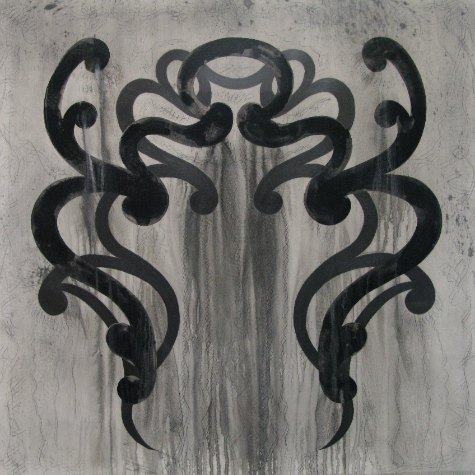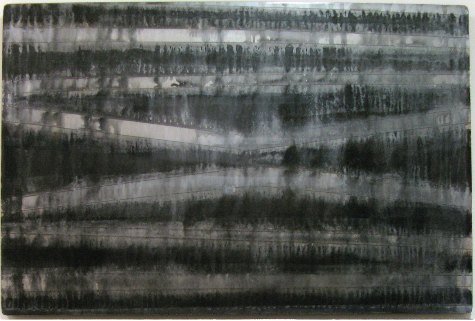Juan Alonso is interested in the decorative flourishes of old Havana. In his paintings they are smoke – vaporous trails edging toward extinction. Flourishes are for him a family affair. His father was an iron worker from a family of iron workers, responsible for the designs of windows and gates. His mother painted flowers on pots.
 Alonso was born in Havana in 1956, three years before Fidel Castro came to power. Alonso remembers food being scarce and people being taken away at night for speaking with less than revolutionary fervor. When he was six, his mother died, and when he was 9, his father sent him to Miami to live with relatives.
Alonso was born in Havana in 1956, three years before Fidel Castro came to power. Alonso remembers food being scarce and people being taken away at night for speaking with less than revolutionary fervor. When he was six, his mother died, and when he was 9, his father sent him to Miami to live with relatives.
His career charts a quiet persistence, an insistence that he will one day produce something of consequence. He was 40 before he found his mature style, a breakthrough that Jacob Lawrence might have been the first to notice. In 1997, when ARTnews asked Lawrence to recommend a young artist who was worthy of greater attention, he wrote back:
The person who comes to mind is Juan Alonso, a Cuban-born painter. His work is deeply personal, autobiographical,
figurative but not illustrative, and it could only be produced by
someone from the Caribbean.
Alonso works in layers of matte and shine in ink, graphite and varnish, building a structure that gives the moist atmospherics around it a ground to engage.
 Snakes and chevrons, horizon lines repeatedly breaking over a mountain: These things he suspends in the cloudy mixtures of memory.
Snakes and chevrons, horizon lines repeatedly breaking over a mountain: These things he suspends in the cloudy mixtures of memory.
Alonso has not yet returned to Cuba, and is ambivalent about friends to visit and come home full of praise.
Alonso:
I don’t think they realize that Cubans working in the
tourist hotels are not allowed to eat there or even talk freely to the
customers. I have a nephew in that position. It’s real. But Americans
visit and say the place is lovely. I say, yes, my island is lovely. It’s
a lovely police state.
At Francine Seders through Sept. 5.



Leave a Reply